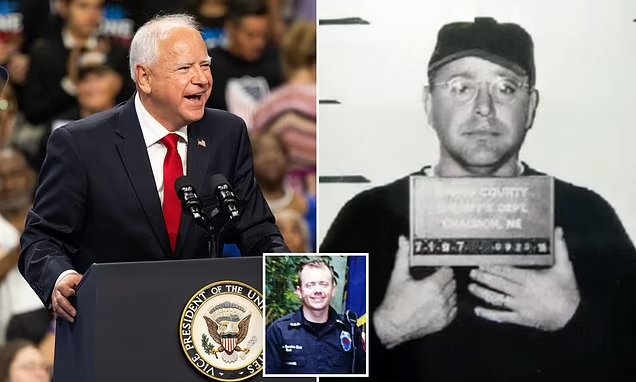In September 1995, then-high school teacher and 31-year-old Tim Walz was arrested for speeding and driving under the influence in Nebraska. He was caught driving 96 mph in a 55 mph zone, and a blood test at a local hospital revealed a blood alcohol level of .128, exceeding the state’s limit of 0.1. Walz pled guilty to reckless driving and later used the incident to educate students about the dangers of drinking and driving.
His attorney stated that Walz sped up initially because he mistook the pursuing state trooper for a pursuer. CNN now reported yet another example of past misrepresentations by the Minnesota Governor, focusing on his 1995 DUI arrest. As Governor Walz pairs up with Vice President Kamala Harris for the upcoming November elections, his history of distorted truths continues to stir controversy among conservatives.
Despite the clear records from 1995, during his 2006 congressional campaign, Walz’s team told a different story. They denied any alcohol consumption on the night of his arrest, attributing his failed field sobriety test to hearing impairments from his service in the National Guard. Moreover, they falsely claimed that Walz was permitted to drive himself to jail, contradicting the actual events where he was transported by a state trooper.
An investigation by CNN’s KFile has highlighted significant discrepancies in the descriptions provided by the campaign of Governor Walz.

When questioned about arresting a man named Tim Walz for drunk driving on a distant Saturday night, Nebraska State Trooper Stephen Rasgorshek referenced a rule he developed over the course of making over 1,000 similar arrests on Nebraska’s roads.
“One of the things I’ve always said is, anyone can get a DUI. It’s what you do with it after you get the DUI,” Rasgorshek said to The Daily Beast on Monday. “If he had stuck with his story of, ‘Look, it changed my life and I stopped drinking,’ I would commend him, 1,000 percent.”
Walz’s campaign manager, Kerry Greely, told the Rochester Post Bulletin that Walz wasn’t drunk. She explained that ear damage from his time with an artillery unit in the Minnesota National Guard had affected his balance and impaired his hearing, making it difficult for him to follow the trooper’s commands.
“The DUI charge was dropped for a reason: it wasn’t true,” Walz’s then-campaign communications director told local news in 2006. “The trooper had him drive to the station and then leave on his own after being at the station. Tim feels bad about speeding and has paid the ticket and apologized to his family at the time it happened.”
Contrary to these statements, the actual police report from the incident revealed that Walz was not allowed to drive himself anywhere following his arrest. Instead, he was transported by police to a local hospital for blood alcohol testing. Further confirmation from Nebraska state police this week showed the discrepancy.
“Under NSP procedure, a person suspected of impaired driving is not allowed to continue driving,” said Cody Thomas, a spokesman for the Nebraska State Patrol, to CNN. “In this case, the suspect was transported by the trooper and was lodged in Dawes County Jail.”
Over the years as Walz ventured into politics, his account of the event shifted. His 2006 congressional campaign contended that he was not drunk, with claims that he had hearing difficulties due to his military service which affected his ability to follow the trooper’s instructions during the sobriety test. His campaign also argued that the DUI charges were dismissed because the judge recognized these mitigating factors. By 2018, when running for governor, Walz described the arrest as a pivotal moment that led him to quit drinking, with Diet Mountain Dew becoming his new beverage of choice.
The pattern of distorting the past is not isolated to his DUI case. Walz’s career in the military and his frequent misrepresentations about his rank further highlight a troubling trend of inaccuracies. As Walz steps onto the national stage, this could pose significant challenges to his credibility and the broader Democratic campaign.
































